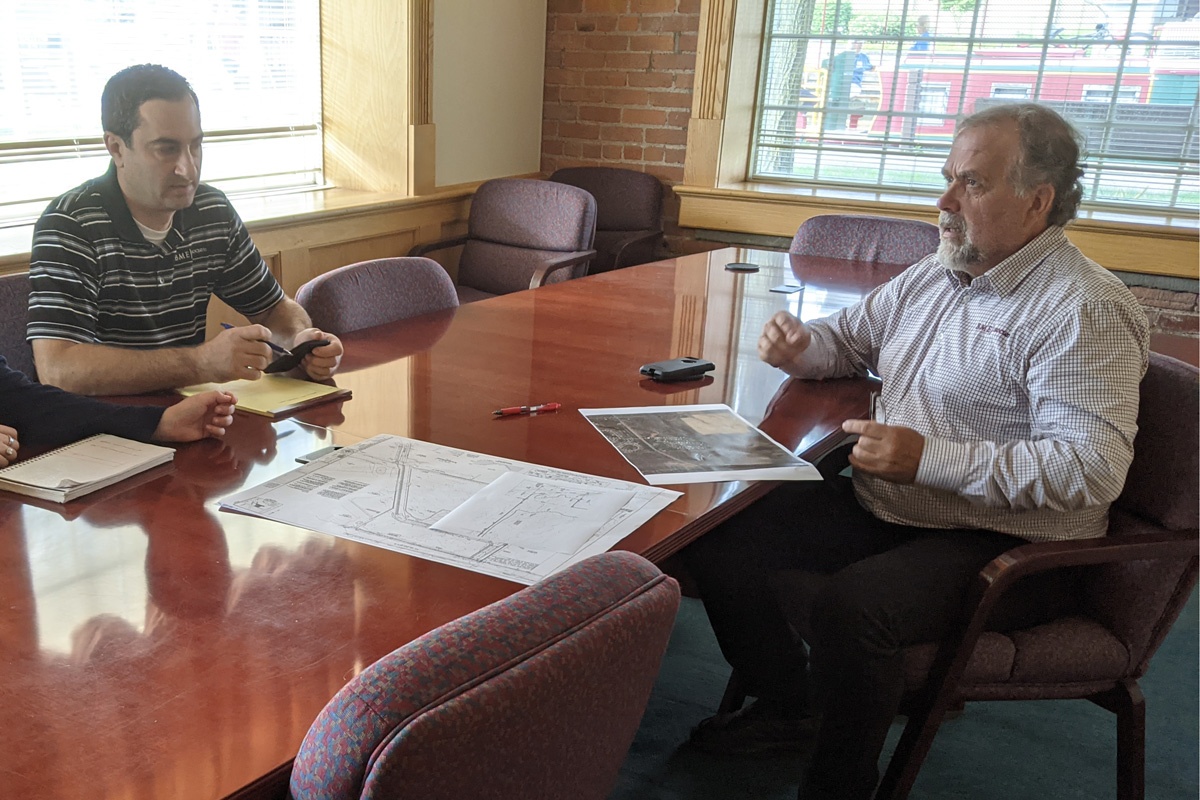In 1988, 26-year-old Martin Janda was finally able to emigrate from the former Czechoslovakia — then part of the communist bloc — to the United States.
Almost immediately, he and his wife and their two-year-old daughter, Alena, came to Rochester where Martin’s brother and wife were living.
Like many immigrants, finding employment was a priority, and Martin took several odd jobs. But then — still in those first few months in the U.S. — serendipity struck.
Several engineers had just started a firm called BME Associates, and they sought talented help. Martin, who had studied civil and environmental engineering in Prague, submitted his resume and was hired. Thus began three decades of excellent work by Martin and by BME.
“To this day I remember Martin walking into BME for his interview,” said BME president Peter Vars. “He was nervous and shy, and I think neither of us knew what to expect, and really, we took a chance on each other. It was such good fortune for us that he found his way to BME, and for the next 33 years BME would reap the benefits of that chance.”
Martin started at BME as a design engineer, and soon became a project engineer. In the early 1990s, however, his educational background, interest and expertise in environmental engineering led to an arrangement that proved highly beneficial and profitable to BME. He started the firm’s own environmental department.
“I’ve always been very interested in the environment and nature,” he said. “In our business, almost every project starts with the need for an environmental study. In those early years, we were farming this work out, so it made sense to create our own department capable to handle it.”
 Over the years, Martin’s department and BME earned a reputation for its proficiency and creativity in environmental site planning.
Over the years, Martin’s department and BME earned a reputation for its proficiency and creativity in environmental site planning.
Among many environmental mitigation situations, there’s one incident that Martin is unlikely to forget. That was Park Point at Rochester Institute of Technology, a large development that called for 4.3 acres of wetlands mitigation, and Martin was the project manager.
“We began talks with the DEC about a year and a half before we designed anything,” Martin recalls.
At first, the agency was highly skeptical, because BME’s proposal involved filling more than four acres of State regulated wetlands. But BME offered a ratio of more than 4-to-1, meaning it would create some 18 acres of wetlands nearby in the same watershed for the 4.3 acres that we would build upon.
Once approval was secured, it essentially became Martin’s challenge to create manmade wetlands that looked natural. It would include open water, deep and shallow marshes, wetland meadows, shrubs, trees and, today, a wide variety of wildlife.
As development of the area progressed, representatives from the Army Corps of Engineers and the DEC made annual visits for five consecutive years.
“In the fourth year,” Martin said, “I was leading the representative on a tour of the wetlands. We rounded a corner and came upon a log. White egrets were sitting on either end of the log, with many ducks on the middle of the log and other birds and waterfowl all around. It was very impressive, and I even have a photo of it in my office.”


But the following year’s tour was filled with high drama. “I was again leading the federal and state representatives,” said Martin, “and we rounded the same corner. There was the log — with nothing anywhere near it but one small, female duck on the log, and she didn’t look that healthy. I thought to myself ‘This isn’t going well.'” The representatives and I looked at each other, remembering the scene from the year before and wondering what had happened.
“Then, at that moment, a huge bald eagle soared into view, made a dive, snatched up the little duck and sped off. We were all a bit stunned, and someone said ‘This is better than National Geographic.”
That’s when Martin turned to the representatives and asked: “Do we get the approval?” At the end of that tour, the approval was granted.
Not every day was filled with such drama, but the satisfaction of helping a client achieve a goal or clear a hurdle was always present.
“The most satisfying thing about my career was being able to do what I love and to extend BME’s offerings to include environmental services.” Martin said. “It is always gratifying when a client comes to us because of our expertise in that area.”
It’s not at all likely that Martin will be bored in retirement. He’ll still enjoy his home on 60 acres, including a two-acre pond, high in the Bristol Hills and surrounded by thousands of acres of forest. and he’ll still do some contract projects for BME.
He’ll travel, too, including trips back to Prague, where he still owns an apartment and a farm in the country, and he’ll enjoy time with his daughters Alena and Maria, medical doctors in North Carolina and Buffalo, respectively. Martin and his girlfriend Canden are also looking forward to spending more time with the grandchildren. He’s also remained close with three nieces, daughters of his late brother, and he envisions many happy family gatherings to come.
I’ve been very fortunate to come to America,” Martin said. “I’ve never felt more welcome and accepted, and I’m very thankful for that.”




